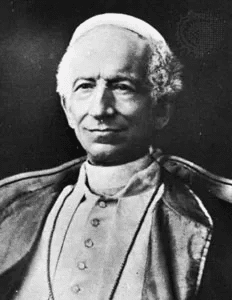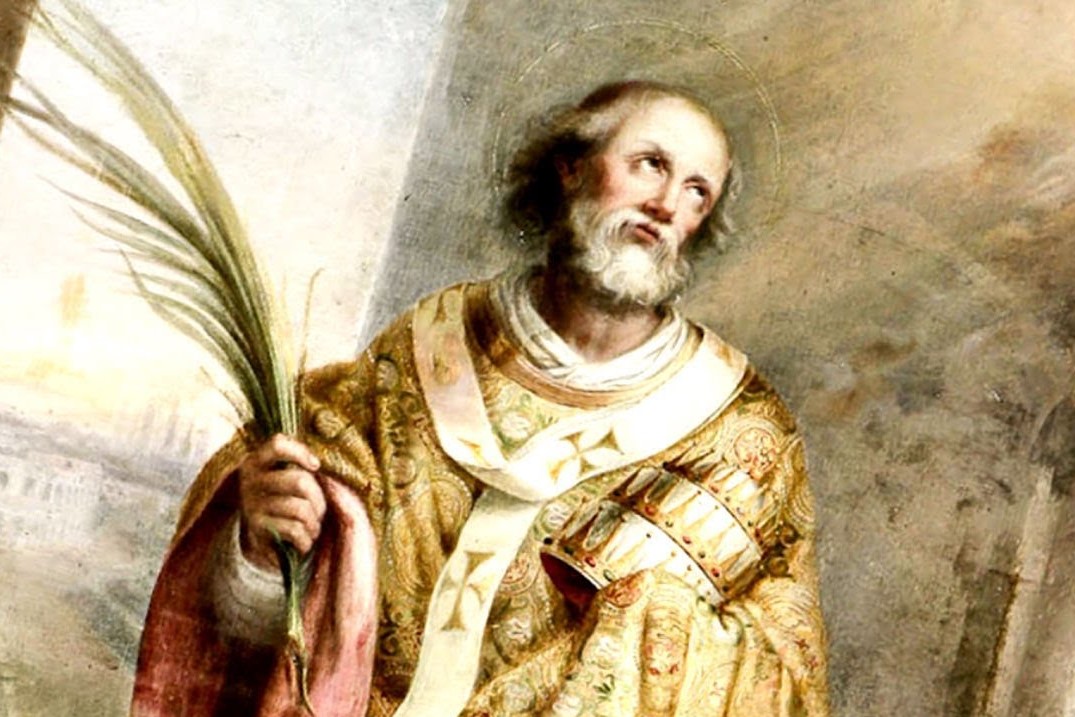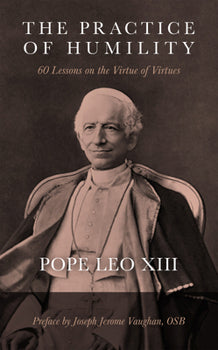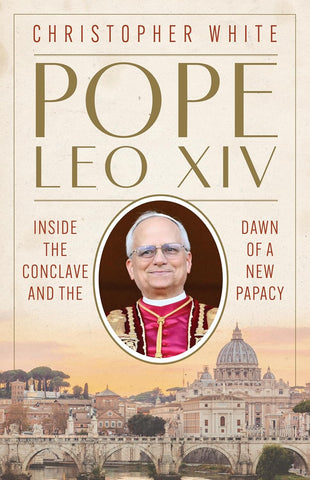It wasn’t what the “pundits” saw coming—an American Pope, not to mention one who would, as Cardinal Robert Francis Prevost did, take the name Leo XIV.
Few names in the Catholic nomenclature carry more power.
Some fretted that it would be a “Peter,” which they saw as a harbinger; others that it would follow the tradition of John Paul, implying strict conservatism; still others Francis, indicating where the new Pontiff was headed.
Instead it was a name in a line that may be the harbinger of where we are heading. Those who bore this name are often looked upon as guardians of doctrine and civilization. The papal name Leo has been associated with some of the most pivotal theological, political, and cultural moments in Church history [here’s a list and summary].
Start with the last one, Leo XIII, who even bore a bit of a resemblance to the new Supreme Pontiff.
It was Pope Leo XIII who revived and revised the momentous prayer to the Archangel Michael.
That had occurred after a vision or locution in which he is said to have heard Satan granted a period of time (said to have been, figuratively or literally, seventy-five years to one hundred years: a century, give or take) to test mankind and the Church. Is that period up? (Or does it yet portend a dramatic conclusion?)
We are certainly in very tense times, including in America, from which this new Pontiff hails.
May 8 was also the anniversary of the Archangel’s appearance in Gargano, Italy.
Leo XIII was also famous for his encyclical against Freemasonry and renowned for his intellectual depth, diplomatic agility, and pioneering role in bringing the Church into modern social debates. His papacy bridged the nineteenth and twentieth centuries during a period marked by the aftermath of the French Revolution, the loss of the Papal States, and the rise of industrial capitalism and socialism.
Leo XIII’s most famous encyclical, Rerum Novarum, addressed the rights and duties of capital and labor. It is widely considered the foundation of modern Catholic social teaching, supporting workers’ rights, unions, and fair wages while rejecting both unbridled capitalism and Marxist socialism.
Known as “the Rosary Pope,” he issued eleven encyclicals on the Rosary, encouraging Marian devotion and promoting the Rosary as a spiritual weapon against modern challenges.
He also reinvigorated Catholic philosophy and theology by promoting Saint Thomas Aquinas as a principal guide and worked to improve relations with secular governments, including Germany, France, and Russia.
If it is any marker, Leo XIII also tried to open channels between the Church and the modern world, advocating for moral leadership without direct political rule. He often emphasized reason, natural law, and the compatibility of faith and science.
It seems entirely unlikely that Cardinal-Prevost-now-Pope Leo XIV, in taking the name Leo, didn’t know of that and perhaps have at least some of it in mind. Marian? He prayed a Hail Mary upon his introduction to the world, invoked Our Lady of Pompeii [see here], and reportedly (this to be confirmed) has been to the apparition site of Medjugorje.
“Today is the day of the Supplication to Our Lady of Pompeii,” he said. “Our blessed Mother Mary always wants to walk with us, be close to us, she always wants to help us with her intercession and her love. So let us pray together for this mission, and for all of the church and for peace in the world.”
And the first Pope Leo?
That was Leo the Great (one of only three pontiffs to bear the title “Great”), known as a theological lion and mystic.
Amid the decline of the Roman Empire and the swelling tide of barbarian invasions, the Church found itself as the last bastion of civilization, order, and truth. It was in this fragile moment of history that the singular figure of Pope Leo I emerged, reigning from 440 to 461 A.D.
A stalwart defender of orthodoxy—a master of the Latin tongue and a spiritual bulwark in a crumbling world—Leo combined the heart of a mystic with the mind of a theologian and the will of a prophet.
While most remember Leo for a confrontation with Attila the Hun (he convinced Attila not to invade Italy), his mystical aspect is less often discussed—but no less central to his legacy.
For Leo was not merely a ruler of the Church; he was a contemplative, a man whose vision pierced beyond the material realm to the eternal mysteries of Christ and His Church.
At the heart of Leo’s papacy was a profound mystical vision of the Incarnation.
His vision of theosis—man’s transformation in God—echoes the mysticism of the Eastern Fathers and prefigures the writings of saints like John of the Cross and Catherine of Siena. He portrayed the Eucharist not merely as a memorial, but as a continuation of the mystery of the Incarnation itself:
His sermons spoke to the cosmic drama of salvation: angels, demons, grace, judgment, and redemption. He saw history not as random tragedy, but as the unfolding of God’s providence.
In his Lenten homilies, he urged the faithful to return to fasting and prayer, not as ritual, but as purification of the soul. His vision of the Christian life is deeply ascetical and rooted in the longing for union with God.
Even temporal disasters, he wrote, must be seen as chastisements permitted for the soul’s awakening.
He once preached, “Our earthly life is the road, not the home.” This mystical realism—rooted in both eternity and history—is perhaps Leo’s greatest legacy.
[resources: Pope Leo XIV and The Practice of Humility by Pope Leo XIII]






